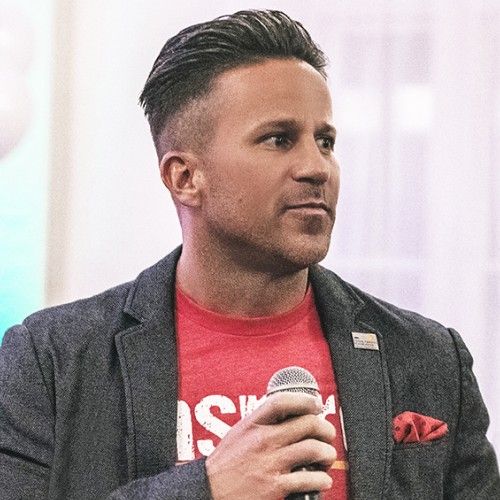Everyone experiences times of nervousness and anxiety. It's human nature and, it's contagious. Many struggle to manage these feelings on their own and unmanaged anxiety can lead to rash and spontaneous decision making. Impulsive communication and decision-making will foster an internal feeling of urgency that others mirror which may spread across groups and offices creating immense stress and anxiety for all levels.
Anxiety can stem from a variety of sources. Specifically in the workplace, anxiety can stem from: poor workplace culture, unclear expectations, too heavy of a workload, conflict with superiors, organizational changes, job insecurity, lack of control, or imposter syndrome. Additionally, managers' words and actions have a higher impact on creating or mitigating anxiety due to their hierarchical position and perceived power within an organization. Similar to the effect of stress or anxiety in an individual's personal life, workplace anxiety can cause a variety of problems such as sleep deprivation, poor work performance, body aches, or physical ailments. Within teams, managers may have a hard time identifying causes of anxiety, or worse, managers may be the cause of anxiety within a team.
Leaders “venting,” gossiping, or complaining to their team members creates a different culture that fosters anxiety and worry for team members, usually leading to a counterproductive work environment. Once a team leader begins complaining to their teams about executive management, timelines, the work environment, or other team members, their direct reports become uncomfortable in the workplace and anxious about their performance.
Similar to anxiety, gossip is a detriment to the work environment and is certainly contagious within the workplace. Both productive and counterproductive work cultures can foster and spread gossip across a team or office. Many feel the need to gossip to be “in the know” or to protect themselves from any potential conflicts within a group. Gossip encourages judgment, cliques, and toxic work behavior that may undermine the success, camaraderie, or expansion of teams. Moving into a psychologically safe and comfortable work environment, managers must reduce any occurrences of gossip and spreading of misinformation to create an environment that values every individual team member.
To better understand the ripple effect of gossip and anxiety, consider Trish who is a partner at a large accounting firm. Trish has been facing struggles with the corporate office creating unreasonable timelines for completing projects and, Trish is becoming frustrated with a professional on her team, John who submits unfinished and unpolished reports. Trish is feeling anxious due to a heavy workload and a lack of support from her team. Trish decides to vent about her challenges with the corporate office to Leo, a manager in her team. Now, Leo is self-conscious about his performance and focuses on overworking and taking on extra responsibilities, eventually leading to burnout. Also after their conversation, Leo begins to lose faith in their company and has decreased organizational commitment to their firm. Throughout the next week, Leo discusses his feelings with other team members, leading to a spread of stress and anxiety in the workplace.
As in the above example, venting and crucial conversations can lead to a spread of anxiety team-wide which exponentially grows, creating an unproductive work environment and negatively impacting the mental health, work-life balance, and personal lives of team members. If managers are feeling anxious or overworked, they should consider finding a new channel. Potential outlets may be horizontal mentorship, executive mastermind groups, or coaching opportunities that provide a safe space to share challenges.
Horizontal mentorship enables leaders in similar positions to share issues they are facing in the workplace and creates an open environment to learn from peers in lateral workplace roles. Opening new opportunities to grow and learn in a dynamic environment catered to the specific problems faced in the workplace makes horizontal mentorship a great tool to reduce anxiety and gossip in the office.
Executive mastermind groups serve as a peer advisory service that allows leaders to share a problem they are facing and receive feedback and advice from executive-level professionals. Through Ambition In Motions Executive Mastermind groups, leaders can find horizontal mentorship, peer advisory resources, and experiences that support individual and team learning which in turn, helps to reduce managers' stress and anxiety.
Finally, managers may consider executive coaching opportunities to improve their team environment and mitigate causes of anxiety. Ambition In Motion offers both team and individual coaching to improve communication and productivity team-wide. In an executive coaching program, individuals are paired with an experienced coach who aids in setting SMART goals and, creating a process for collecting and analyzing measures of success for these goals.
In working to reduce overall workplace anxiety, managers should concentrate on reducing gossip within the workplace. Gossip fosters cliques, damages professionals' reputations, erodes trust, and spreads misinformation which will eventually detriment workplace morale. Gossip in the workplace may also lead to unnecessary conflict and a decline in productivity.
Even with understanding the implications of workplace gossip, it is still challenging for a manager to control or decrease gossip in the workplace. Managers working on decreasing gossip in the workplace should focus on leading by example. Building a cohesive team that promotes collaboration and communication will work to decrease gossip throughout a team. In having a more collaborative team, misinformation will be challenging to spread because direct reports will build a community and embrace camaraderie within the team.
Other steps to reduce gossip in the workplace may be to set clear expectations about professional behavior or to host a seminar explaining the negative effects of gossip. With clear communication, individuals will be less likely to spread misinformation. However, if a manager feels that their team needs additional guidance, they should always communicate with human resources and find out about other tools or resources available to leaders and team members for the betterment of the team.




































































